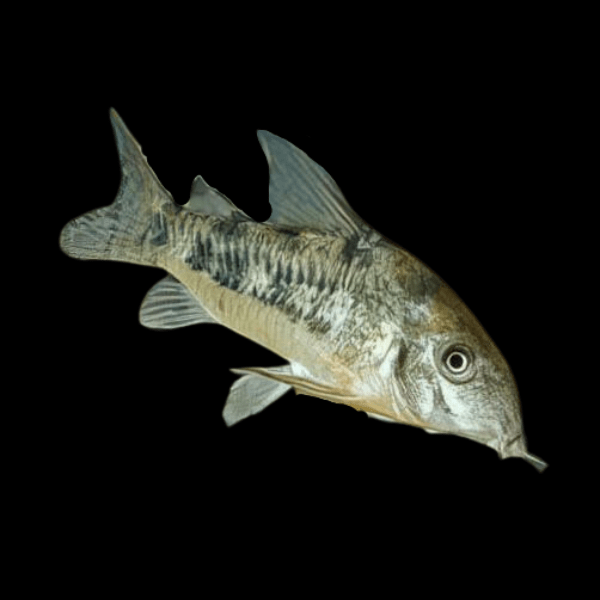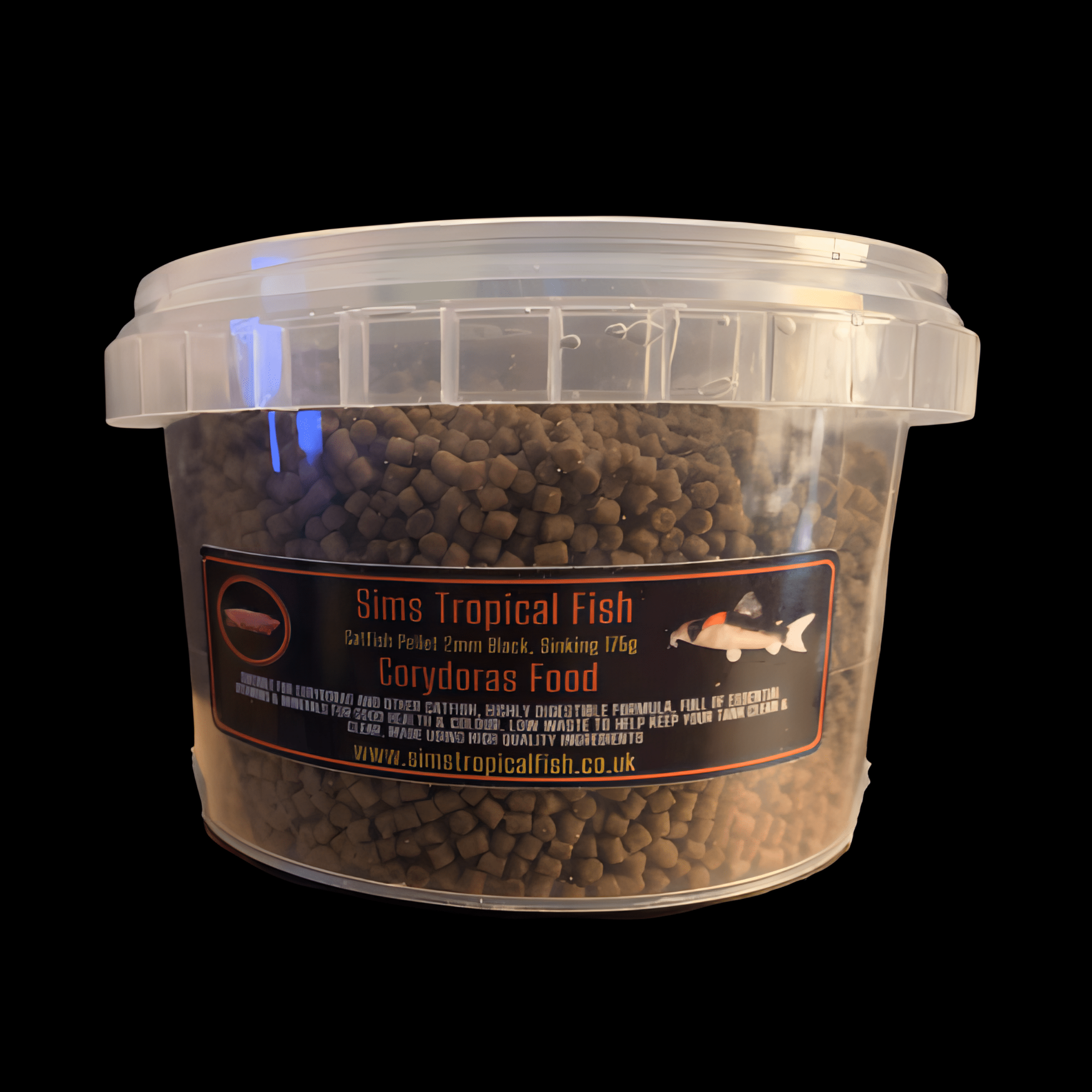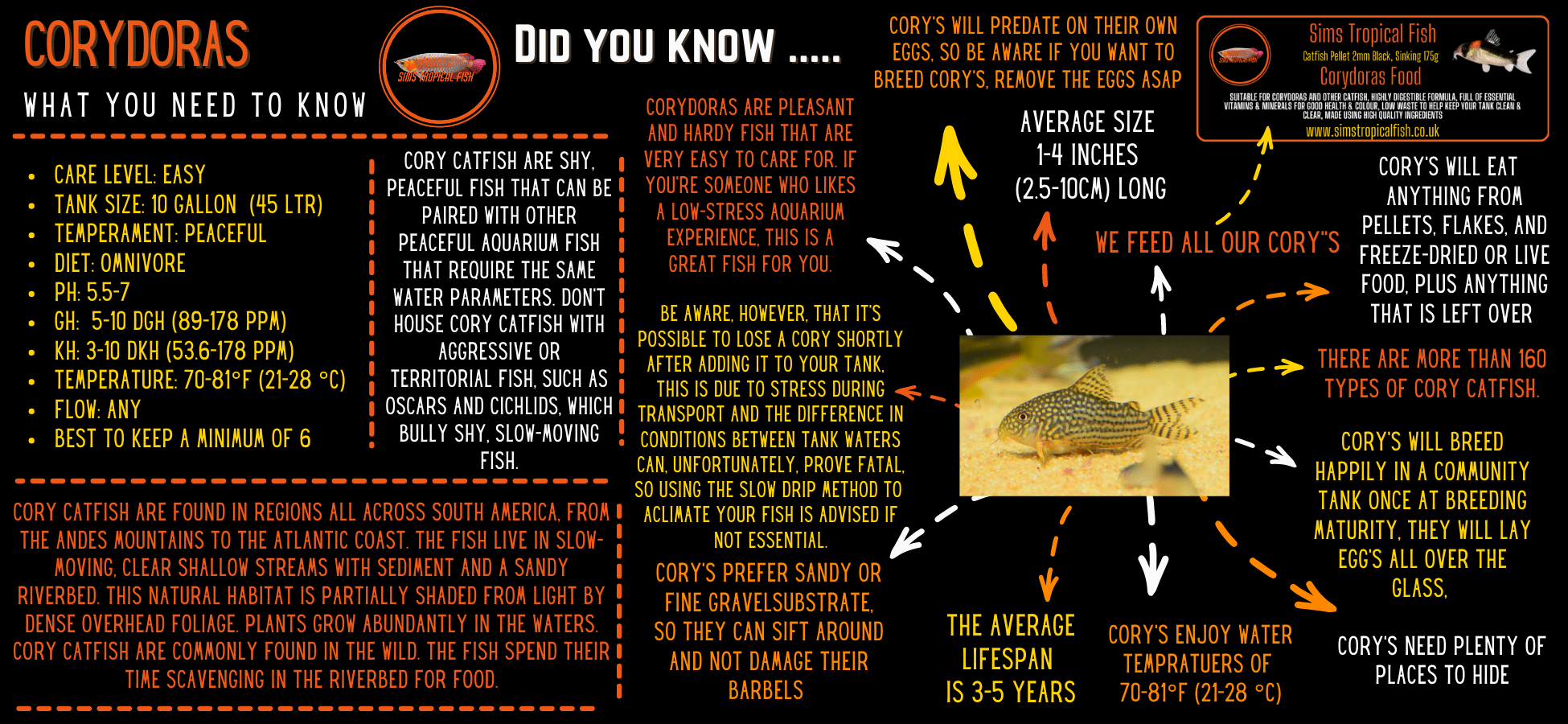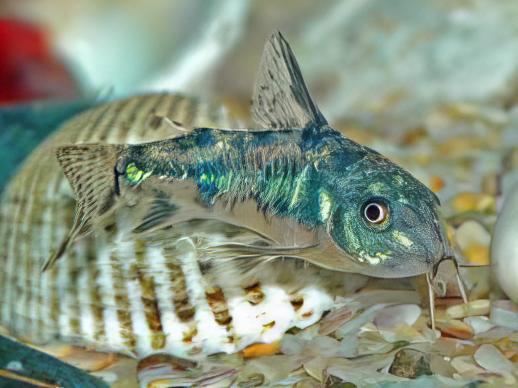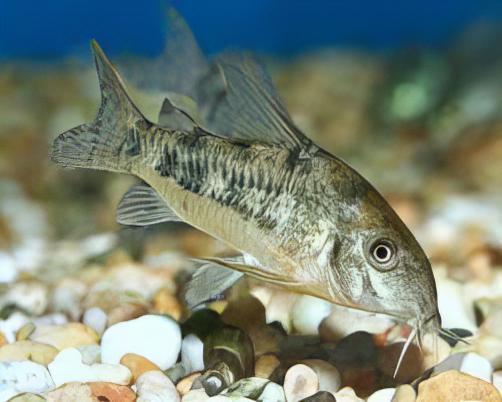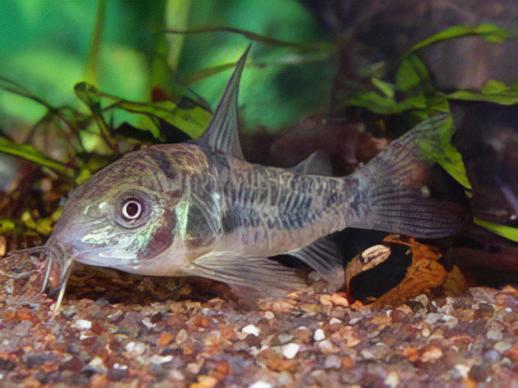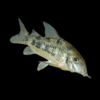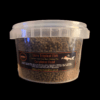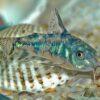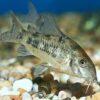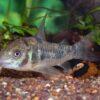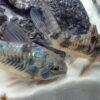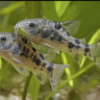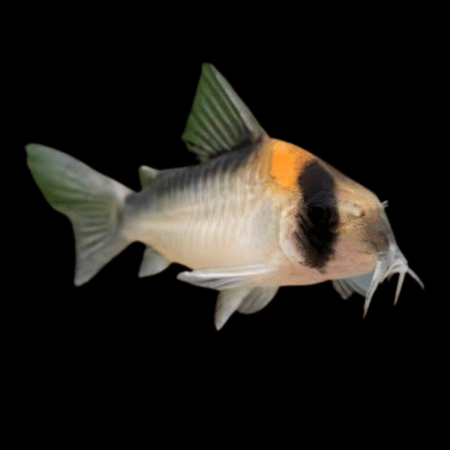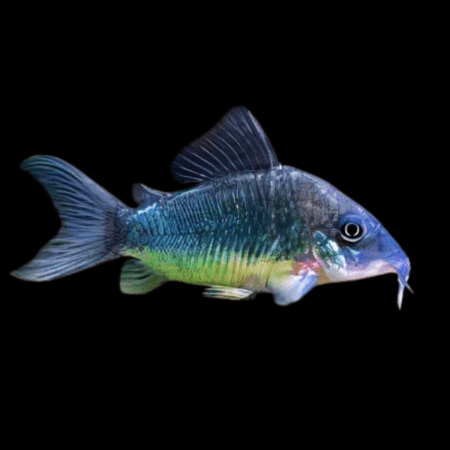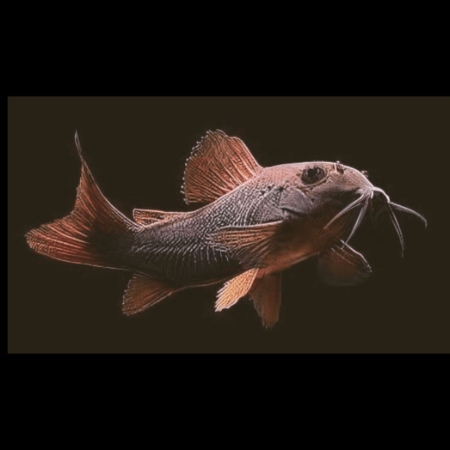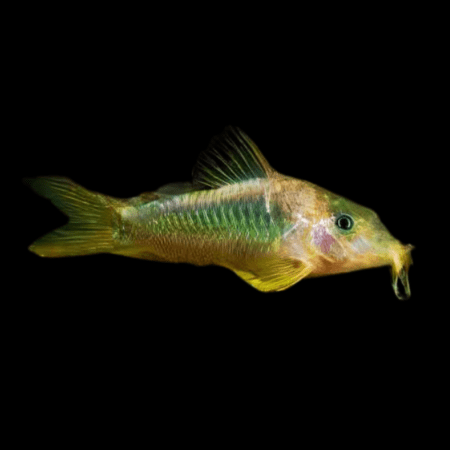Description
Peppered Corydoras Paleatus
Overview
| Synonyms | Callichthys paleatus, Corydoras maculatus, Corydoras marmoratus, Corydoras microcephalus |
| Distribution | Lower Parana River basin and coastal rivers in Uruguay and Brazil. Most specimens offered for sale in the trade are captive-bred. |
| Maximum Size | 6cm (2.36″) |
| Temperature | 15-25°C |
| Water Parameters | Captive-raised specimens will adapt to a wide range of water conditions, providing that good water quality is maintained. |
| Compatibility | Community |
| Lighting | No special requirements |
| Sexual Dimorphism | Females are significantly larger and appear wider when viewed from above. Males are slimmer and often have an extended dorsal fin. |
| Feeding | Catfish pellets, granules, flake and frozen foods |
Description
Care
The Peppered Cory has a long and distinguished history as an aquarium fish, having been amongst the specimens collected by a young Charles Darwin in his voyage aboard The Beagle in the 1830s, although it would be almost another 50 years before they were first bred in Paris by Piere Carbonier in 1878. Like most of its relatives, this is a perfect choice for the community aquarium. To ensure their whiskers remain in good condition, these catfishes should be kept on a soft sand substrate which they will sift tirelessly for anything edible. This trait has led to them being recommended to clean up uneaten food but care must be taken to make sure that they get properly fed on a range of sinking foods. These sociable species should be maintained in groups of five or more due to their shoaling nature. Some shady planted areas should be provided. Corydoras have the ability to breathe air intestinally, so a small gap should be left between the surface of the water and the cover slides in order for the fish to come up to the surface and take air in. A quirky feature of these catfish is their ability to move their eyes in what looks like a winking motion. Wild specimens are something of a rarity in the trade but are seen from time to time – they often have more metallic colouration and the males sport high dorsal fins. As their native range extends further south than many tropical species, Peppered corys are happy to live at cooler temperatures and are a good choice for unheated aquaria. An albino form is also seen and this can be distinguished from the more frequently seen C. aeneus albino by the presence of iridescent blue markings. Males of many strains have higher dorsals and this is especially the case in the selectively bred hi-fin and long-fin forms.
Taxonomic revision in the future will see this species moved out of the genus Corydoras, although it may be a further 190 years before any new name is embraced by a trade that has seen no previous change to this long-established binomial! For now, C. paleatus resides in Lineage 6 with a few close kin.
Feeding
Catfish pellets and other sinking foods are a good staple, with frozen foods such as Cyclops, mosquito larvae and Daphnia a welcome treat.
Breeding
Mature pairs can be triggered into spawning by performing a large, slightly cooler water change. The pair will adopt the classic “T position” where the male fertilises the eggs that are held between the females pelvic fins. The adhesive eggs will then be deposited onto plants, decor, or the sides of the aquarium etc and the process repeated. The eggs generally take 3-4 days to hatch after which time the tiny fry should be offered finely powdered first foods. A few days later they will be able to take newly hatched brineshrimp. To avoid predation and ensure a higher success rate, many fishkeepers move the parents to another aquarium after the eggs have all been deposited.

